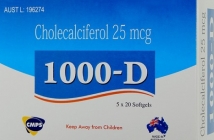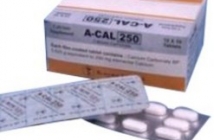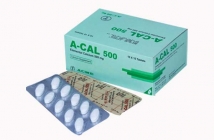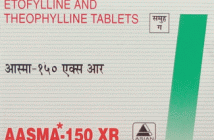Home / Categories / DIVON SPRAY

DIVON SPRAY
(1)
DICLOFENAC SPRAY
NSAIDS/ANTI-PYRETICS/ANALGESIC
MICRO LABS LIMITED
Product Details
Diclofenac
A to Z Drug Facts
Diclofenac
Action
Indications
Contraindications
Route/Dosage
Interactions
Lab Test Interferences
Adverse Reactions
PrecautionsPatient Care Considerations
Administration/Storage
Assessment/Interventions
Patient/Family Education
(die-KLOE-fen-ak)CataflamTablets: 50 mg (as potassium)SolarazeGel: 3% (1 g contains 30 mg diclofenac sodium)VoltarenTablets, delayed-release: 25 mg (as sodium), 50 mg (as sodium), 75 mg (as sodium)Voltaren-XRTablets, delayed-release: 100 mg (as sodium)Apo-Diclo, Apo-Diclo SR, Novo-Difenac, Novo-Difenac SR, Nu-Diclo, Taro-Diclofenac, Voltaren OphthaClass: Analgesic/NSAID
 Action Decreases inflammation, pain, and fever, probably through inhibition of cyclooxygenase activity and prostaglandin synthesis.
Action Decreases inflammation, pain, and fever, probably through inhibition of cyclooxygenase activity and prostaglandin synthesis.
 Indications Treatment of rheumatoid arthritis, ankylosing spondylitis, osteoarthritis. Potassium salt is approved for management of pain and primary dysmenorrhea, when prompt pain relief is needed.
Indications Treatment of rheumatoid arthritis, ankylosing spondylitis, osteoarthritis. Potassium salt is approved for management of pain and primary dysmenorrhea, when prompt pain relief is needed.
Ophthalmic: Treatment of postoperative inflammation after cataract removal.
Topical: Treatment of actinic keratosis. Unlabeled use(s): Treatment of biliary colic, dysmenorrhea, enuresis, glomerular disease, gout, migraine headache, renal colic.
 Contraindications Sensitivity to aspirin or any NSAID; soft contact lenses (ophthalmic); benzyl alcohol, polyethylene glycol monomethyl ether 350, and hyaluronate sodium (topical).
Contraindications Sensitivity to aspirin or any NSAID; soft contact lenses (ophthalmic); benzyl alcohol, polyethylene glycol monomethyl ether 350, and hyaluronate sodium (topical).
 Route/Dosage
Route/Dosage
Osteoarthritis
PO 100 to 150 mg/day in divided doses.
Rheumatoid Arthritis
PO 100 to 200 mg/day in divided doses.
Ankylosing Spondylitis
PO 100 to 125 mg/day in divided doses; may give additional 25 mg at bedtime.
Analgesia and Primary Dysmenorrhea (Potassium Salt Only)
PO 50 mg tid; may give initial dose of 100 mg if needed.
Ophthalmic
1 drop of 0.1% solution in affected eye qid.
Actinic Keratosis
ADULT: Topical Apply gel to lesions bid.
 Interactions
Interactions
Cyclosporine: May increase nephrotoxicity. Digoxin: May increase digoxin serum concentrations. Diuretics: May inhibit diuretic and antihypertensive effects. Lithium: May decrease lithium clearance. Methotrexate: May increase methotrexate levels. Warfarin: May increase risk of gastric erosion and bleeding.
 Lab Test Interferences May prolong bleeding time.
Lab Test Interferences May prolong bleeding time.
 Adverse Reactions
Adverse Reactions
CV: Edema; water retention; hypertension; CHF. CNS: Headache; vertigo; drowsiness; dizziness. DERM: Rash; urticaria; fasciitis; photosensitivity; contact dermatitis, exfoliation (topical). EENT: Transient stinging and burning (ophthalmic); tinnitus. GI: Diarrhea; vomiting; abdominal pain; dyspepsia; peptic ulcer; GI bleeding. GU: Acute renal failure; nephrotic syndrome. HEMA: Fall in hemoglobin; bruising; prolonged bleeding time; thrombocytopenia purpura; anemia. RESP: Breathing difficulties in aspirin-sensitive individuals. OTHER: Hypersensitivity reactions. Ophthalmic use may cause bleeding tendencies and other effects associated with systemic use, caused by absorption.
 Precautions
Precautions
Pregnancy: Category B. Lactation: Undetermined. Children: Safety and efficacy not established. Elderly: Increased risk of adverse reactions. GI effects: Serious GI toxicity (eg, bleeding, ulceration, perforation) can occur at any time, with or without warning symptoms. Renal effects: Acute renal insufficiency; interstitial nephritis; hyperkalemia; hyponatremia; and renal papillary necrosis may occur.
PATIENT CARE CONSIDERATIONS
 Administration/Storage
Administration/Storage
- Administer after meals or with food to minimize gastric irritation.
- Do not administer antacids within 2 hr of giving enteric-coated diclofenac because antacids may destroy enteric coating.
 Assessment/Interventions
Assessment/Interventions
- Obtain patient history, including drug history and any known allergies.
- Assess arthritic pain and limitations of movement before and after administration (pain location and intensity).
- If given for eye inflammation after surgery, assess for changes.
- Notify health care provider of any signs of GI bleeding.
- Monitor and document I&O.
- Monitor for GI problems and guaiac stool.
- Review baseline CBC, BUN, and creatinine.
- If photosensitivity occurs, provide protective measures (eg, sunscreens, clothing) until tolerance is developed.
- If BP rises to hypertensive range, notify health care provider.
- Monitor transminases and other hepatic enzymes. Make a determination from lab results within 4 wk of initiating therapy and at intervals thereafter. Discontinue diclofenac immediately if clinical signs and symptoms consistent with liver disease develop, if systemic manifestations occur (eg, eosinophilia, rash), and if abnormal liver tests are detected or worsen.
OVERDOSAGE: SIGNS & SYMPTOMS Acute renal failure, nausea, vomiting, drowsiness
 Patient/Family Education
Patient/Family Education
- Explain name, expected action, method of administration, and potential side effects of diclofenac.
- Tell patient to take medication with meals or food to minimize gastric irritation.
- Review signs and symptoms of GI irritation and bleeding.
- Advise patient to avoid alcohol, aspirin, and any other drugs that cause GI irritation and bleeding.
- Avoid driving or performing other tasks requiring mental alertness if drowsiness or dizziness occur.
- Teach patient proper technique for instilling eye drops.
- If patient is taking enteric-coated form, caution about avoiding use of antacids.
- Advise patient not to take OTC analgesics while taking this medication.
Books@Ovid
Copyright © 2003 Facts and Comparisons
David S. Tatro
A to Z Drug Facts
Substitutes
Substitutes not found for DIVON SPRAY




